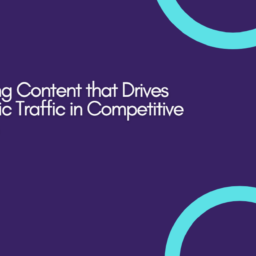In a world dominated by Google and social media feeds, it’s hard to imagine a digital experience without “search.” But the rise of AI, voice assistants, and predictive personalization is quietly pushing us toward a future where browsing may no longer be necessary—and for marketers, this changes everything.
From Intent to Anticipation
Traditionally, marketing strategies were built around search intent. Consumers had a need, typed it into Google, and marketers responded. But with the rise of AI-driven recommendation engines, voice assistants, and context-aware apps, digital experiences are becoming increasingly anticipatory.
- Netflix shows you what to watch before you ask.
- Spotify builds your next playlist before you press play.
- Amazon recommends products before you search.
This is the death of the search bar as the primary interface.
AI Is Replacing Search With Suggestions
Large language models (LLMs), predictive analytics, and agentic AI now predict what users want based on behavior, time, mood, and micro-signals. Instead of browsing menus or scrolling feeds, users are nudged directly to action:
- Voice assistants return a single answer, not ten links.
- AI-powered content feeds remove the need to browse categories.
- Hyper-personalized landing pages adjust before the user clicks.
Marketing is moving from “find and choose” to “predict and present.”
Searchless Commerce: The New Customer Journey
Searchless experiences are redefining ecommerce:
- Shopify Magic and similar tools now personalize product recommendations via AI before users interact.
- Live commerce (especially in Asia) uses real-time algorithms to promote products without keyword-driven discovery.
- Subscription and replenishment models (think Amazon’s “Subscribe & Save”) remove browsing entirely.
Customers don’t browse. They receive.
What This Means for Marketers
Searchless marketing requires a mindset shift. Here’s how to stay ahead:
1. Build for Context, Not Keywords
Instead of optimizing for search terms, optimize for situations, triggers, and behaviors. Ask: “What should we show when the customer isn’t actively searching?”
2. Invest in Predictive Tech
Leverage tools that can pre-empt needs—AI-driven personalization engines, behavioral segmentation, and autonomous marketing agents.
3. Own the First Touchpoint
If you’re not the one offering the first suggestion, someone else is. Recommendation surfaces (like Google Discover, YouTube’s homepage, or even smart fridges) are now more powerful than search results.
4. Design Zero-Click Journeys
Make conversion possible with as few interactions as possible. Think single-swipe signups, instant offers, and pre-filled checkouts.
The Risks of a Searchless Future
While frictionless experiences are powerful, they remove user agency. This raises ethical questions:
- Are we nudging or manipulating?
- Will users trust AI-curated decisions?
- How transparent should suggestions be?
Marketers must balance personalization with permission and transparency.
Final Thoughts: Marketing Without Menus
We’re entering an era where consumers don’t “browse”—they respond to intelligent systems. For marketers, this means less about being found and more about being first.
The question is no longer “How do we rank?”
It’s “How do we get suggested?”




